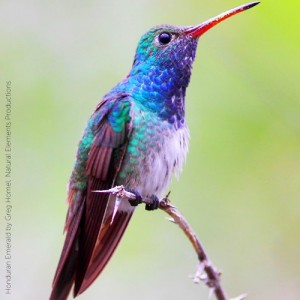Six clubs currently exist in Honduras. They all were established relatively recently with the help of the Honduras Ornithological Association (ASHO). These clubs are scattered around Honduras, a country about the size of Virginia.
 |
| A Baltimore Oriole feeding in my backyard in Ithaca, NY in August 2016 (phot credit: Jody Enck). This oriole could well indeed spend the upcoming winter in Honduras. |
My main plan is to be in Honduras from mid October until mid November. First, I will take part in the Lake Yojoa Birding Blitz facilitated by Beaks and Peaks, a wonderful, local eco-tourism company out of Gracias Lempiras, in the west-central region of Honduras. (Check out their website at Beaks and Peaks). Here is a quote from the website about the Birding Blitz:
"With your participation in the Lake Yojoa Birding Blitz, you contribute to a deeper scientific knowledge of the avifauna in this hugely biodiverse region and to the promotion of Honduras as a birdwatching and nature destination par excellence. Furthermore, part of the tour price will be donated to the Honduran Ornithology Association (ASHO) and will be used to support local birders and bird watching clubs, to organize training for aspiring bird watching guides and to encourage further data collection by means of bird counts and monitorings in the area and in other parts of the country."
One of the birding clubs in Honduras is located very near Lake Yojoa, and I'll get a chance to meet and bird with them while at the Birding Blitz.

After taking part in the Lake Yojoa Birding Blitz, I will accompany Oliver Komar, a professor at Zamarano University and a member of the board of ASHO, down south to the capital city of Tegucigalpa. There I will meet with faculty and students at the University to discuss how local birding clubs can assist with on-the-ground bird conservation efforts. I'll also have a chance to meet with the birding club based in Tegucigalpa.
Over the next couple of weeks I plan to travel to western Honduras to meet with a club called Tanunas in the department (state) of Gracias, and to north-central Honduras to meet with a club in Catecamas (Olancho department). The American Bird Conservancy has a presence in Catecamas through their in-country partner NGO -- the Honduran Research Association for Ecological and Socioeconomic Development (ASIDE).
The bird club in Catecamas and ASIDE work on sustainable community development issues, and conservation projects of importance to both neotropical migratory birds as well as resident species, like the Honduran Emerald.
 |
| Photo of the only bird endemic to Honduras. The Honduran Emerald occurs only in a few spots in Honduras, and nowhere else in the world. Photo credit: Greg Homel, Natural Elements Productions. |
Here is information quoted directly from the American Bird Conservancy website:
The Honduran Emerald
The Honduran Emerald is found only in the small Central American country of Honduras, where it is the country’s only endemic bird species. This, combined with its endangered status, makes it a high priority for us and our local partner ASIDE.
Part of the hummingbird population occurs in remnant tropical dry forest habitat in the Agalta Valley, where most of the habitat suitable for the hummingbird has been cleared for cattle grazing and other agricultural purposes such as fruit production.
During the last 10 days of my time in Honduras, I will be participating in the Honduras Birding Tour for Conservation http://hondurasbirdtour.com/. This tour will take me back to Lake Yojoa, to the area around the Copan Ruins (from the Mayan civilization) in western Honduras, and the north coast around Pico Bonito National Park, and finally finishing up back in San Pedro Sula. I will be participating on a team led by Jeff Gordon, president of the American Birding Association and local Honduran bird guides to raise awareness among the birding community of the potential of Honduras as a birding destination. This part of my trip will allow me to meet with members of birding clubs in La Ceiba (near Pico Bonito National Park) and in San Pedro Sula.Please consider helping to support this effort by making a contribution towards my in-country travel: www.gofundme.com/2rha68nv. Stay tuned for more information!
No comments:
Post a Comment